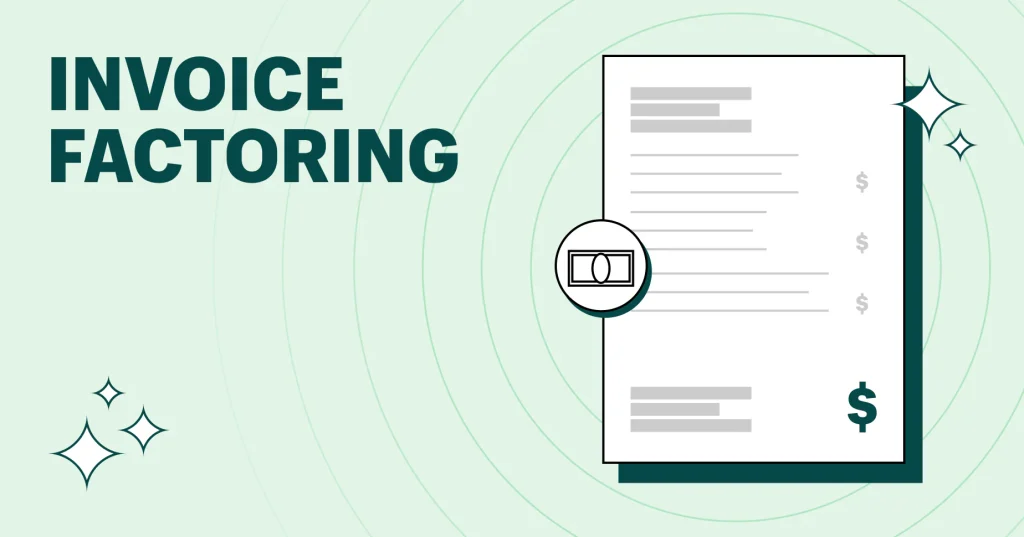Effective cash flow management is the lifeblood of any business, especially for small to medium enterprises (SMEs) navigating periods of growth, slow-paying clients, or seasonal fluctuations. One financing strategy that has gained popularity in recent years is invoice factoring. But is it the right choice for your business?
In this article, we’ll explore the advantages and disadvantages of using invoice factoring to improve cash flow, highlight industries where it’s commonly used, and show how platforms like ProInvoice can offer better, smarter invoicing tools that eliminate many of the problems associated with traditional factoring.
1. What is Invoice Factoring?
Invoice factoring is a financial transaction in which a business sells its outstanding invoices (accounts receivable) to a third party called a factoring company—at a discount. In return, the business receives immediate cash, often within 24 to 48 hours, instead of waiting 30, 60, or even 90 days for customers to pay.
Here’s how it typically works:
You deliver goods or services to your client and issue an invoice.
Instead of waiting for the client to pay, you sell the invoice to a factoring company.
The factoring company advances you a percentage (usually 70–90%) of the invoice amount upfront.
Once your client pays the invoice, the factoring company releases the remaining balance to you—minus a service fee.
2. Why Businesses Turn to Invoice Factoring
Businesses often consider invoice factoring for one main reason: to improve cash flow. Whether it’s covering payroll, funding operations, or taking advantage of time-sensitive opportunities, access to working capital is vital.
This financing method is especially appealing to businesses that:
• Have long payment cycles (e.g., net 30/60/90 days).
• Serve large clients with reliable credit but slow payments.
• Experience seasonal cash flow fluctuations.
• Are growing rapidly and need liquidity to scale operations.
3. Advantages of Using Invoice Factoring
Let’s break down the key benefits of invoice factoring that make it a preferred solution for many businesses.
3.1. Improved Cash Flow
The most obvious benefit is immediate access to cash. Rather than waiting for customers to pay, you get a large portion of the invoice value upfront, allowing you to reinvest in your operations right away.
3.2. Faster Business Growth
With improved cash flow, you can fund inventory purchases, hire staff, or expand into new markets. Factoring gives businesses the financial agility to take bold steps without being held back by unpaid invoices.
3.3. No New Debt Incurred
Unlike loans or lines of credit, invoice factoring is not debt. Since you’re essentially selling an asset (your invoice), it doesn’t appear as a liability on your balance sheet.
3.4. Easier Qualification
Traditional bank loans often require strong credit history, collateral, and lengthy documentation. Factoring companies, on the other hand, base decisions on the creditworthiness of your customers, not your business. This makes factoring more accessible to startups or businesses with thin credit files.
3.5. Outsourced Collections
Some factoring companies offer collections and accounts receivable management services, helping you save time and reduce administrative overhead.
3.6. Flexibility
Factoring is often a scalable solution. The more invoices you generate, the more capital you can access. It grows with your business.
4. Disadvantages of Using Invoice Factoring
While invoice factoring has its perks, it’s not without drawbacks. Here are the downsides you should consider before factoring your invoices.
4.1. Costs and Fees
Factoring is not free. The service fee—usually 1–5% of the invoice value—can add up quickly, especially if customers take a long time to pay. Some companies also charge additional administrative fees, hidden costs, or minimum volume commitments.
4.2. Impact on Customer Relationships
Your customers may be contacted by the factoring company for payment collection, which could affect the perception of your business. If not handled delicately, this could harm long-standing customer relationships.
4.3. Loss of Control
By selling your invoices, you give the factoring company some control over customer interactions. If the factor is aggressive or unprofessional, it may reflect poorly on your brand.
4.4. Limited to B2B Transactions
Factoring generally works best in business-to-business (B2B) models with large or institutional clients. Businesses that serve individual consumers (B2C) may not benefit much from factoring.
4.5. Short-Term Solution
Invoice factoring is often seen as a stopgap measure. While it improves short-term cash flow, it doesn’t address systemic financial issues like low profitability, poor collections practices, or bad invoicing systems.
5. Is Invoice Factoring Right for Your Business?
Ask yourself the following:
• Do you have reliable, creditworthy clients with long payment terms?
• Are you experiencing cash flow gaps but don’t want to take on debt?
• Can your margins accommodate factoring fees?
• Are you okay with a third-party interacting with your customers?
If you answered yes to most of these questions, factoring may be a viable option at least temporarily. However, many businesses eventually seek more cost-effective and brand-safe alternatives, especially as they mature.
6. Alternative: Upgrade Your Invoicing Process Instead
Instead of selling off your receivables, why not optimize your invoicing system to get paid faster and improve your cash flow naturally?
That’s where ProInvoice comes in.
ProInvoice is a smart, cloud-based invoicing solution built for African businesses. It empowers you to:
• Create professional invoices in minutes.
• Track payment status in real time.
• Send automated reminders to reduce late payments.
• Accept payments online directly from the invoice.
• Generate financial reports to improve decision-making.
By using ProInvoice, you can eliminate many of the cash flow problems that lead businesses to factoring in the first place—without sacrificing revenue to third-party financiers or risking customer relationships.
7. Final Thoughts
Invoice factoring can be a useful financial tool for businesses looking to bridge cash flow gaps. It offers fast access to working capital without incurring debt, making it ideal for companies with slow-paying but reliable clients.
However, the fees, potential customer relationship risks, and lack of long-term scalability should not be overlooked. It’s important to weigh these disadvantages against your current financial health, business model, and growth stage.
If you’re looking for a more sustainable, cost-effective way to improve your cash flow, start by strengthening your invoicing and collections process. With the right digital tools like ProInvoice, you can gain control over your receivables, get paid faster, and position your business for long-term success without needing to factor a single invoice.
8. Take Control of Your Cash Flow with ProInvoice
Instead of giving up a portion of your revenue to factoring companies, invest in a smart invoicing solution that gets you paid faster—on your terms.
Try ProInvoice today and experience the difference for your business.
✅ Send professional invoices in seconds
✅ Get paid faster with automated reminders
✅ Track your income and expenses in one dashboard
✅ Impress your clients with branded invoices
Visit ProInvoice.co to get started—free!













